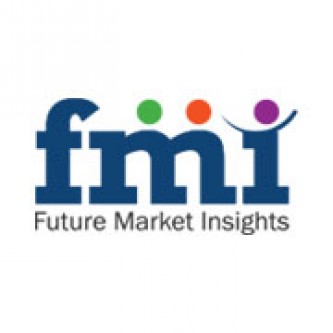Various biological research often involves the use of molecular labels that are attached to a protein of interest to facilitate detection or purification of the labeled protein and/or its binding partners. Proteins can be labeled during cell growth by incorporation of amino acids containing different isotopes, or in biological fluids, cells or tissue samples. The main applications for protein labeling are biological processes monitoring, reliable quantification of compounds and specific detection of protein modifications and isoforms in multiplexed samples, enhancement of detection sensitivity and simplification of detection workflows. There are multiple types of labels available, their varied uses are preferable for specific applications. Typically, three different types of tags are employed: stable isotopes, mass tags, and fluorophores, to the target protein or sequence
Protein Labelling Market: Drivers and Restraints
Increasing healthcare expenditure is majorly driving the market. Increase in the R&D expenditure leading to a reduction in process complexity for protein labeling by companies coupled with improvement in existing technologies that are anticipated to accelerate growth. The market is witnessing a number of new product launches and growing adoption of bioengineering technologies to speed up the market growth.
Request Report Sample@ http://www.futuremarketinsights.com/reports/sample/rep-gb-2817
Development in the technology to produce advanced dyes that rapidly conjugates with the specific peptides or nucleotidein order to detect their presence and further purification process more accurately are expected to make the process more efficient and will have positive impact on the market. Improvements in accuracy, resolution and procedures used in techniques such as fluorescence & biorthogonal tagging are estimated to grow over the forecast period.
The adoption of IT technology anticipate to automate and ease up the research and development and expected to boost experimentation and research. Also, technological advancement and upcoming innovation in Global Protein Labeling market such as computer-controlled systems for fluorescence and laser-confocal microscopy are creating scope for the market.
Protein Labelling Market: Segmentation
On the basis of products, the protein labeling market is segmented into reagents, kits, and services. Whereas based on application, the protein labeling market is segmented into cell-based assays, fluorescence microscopy, immunological techniques, mass spectrometry, and protein microarray. Global Protein market further segment by labeling technique and contribute considerable market share through in-Vivo and in-Vitro techniques.
Segmentation by Product
-
Reagents
-
Kits
-
Services
Segmentation by Application
-
Cell-based assays
-
Fluorescence Microscopy
-
Immunological Techniques
-
Mass Spectrometry
-
Protein Microarray
Segmentation by Labelling Technique
-
In-Vivo
-
In-Vitro
Visit For TOC@ http://www.futuremarketinsights.com/toc/rep-gb-2817
Protein Labelling Market: Overview
Global Protein Labeling Market by product includes reagents like enzymes, monoclonal antibodies, proteins, probes/tags, kits and service markets. The reagents used for protein labeling accounted for the largest share of revenue. The larger share can be augmented due to high demand for labeling of peptides, antibodies and proteins at reaction locations of functional amino acids, and development of novel reagents that have chemo selective capabilities & amino acid cross linking abilities. The market is expected to witness a significant growth rate during the forecast period.
Protein Labelling Market: Regional Overview
The geographic segments for Protein Labelling are North America, Western Europe, Eastern Europe, Asia Pacific excluding Japan, Japan, Latin America and Middle East and Africa. North America is further segmented into the U.S. and Canada. North America has the most lucrative market and accounts for over 45% of the global revenue in 2015. North America generates highest revenues across the globe due to presence of most major players in the region working on enhancing their portfolios on offer and rise in adoption of protein labeling in tandem with development of genomic sequencing and personalized medicine are the major factors accounting for the region’s dominant position. While Asia Pacific is poised to witness the highest growth rate from 2015 to 2026. Untapped APEJ countries such as China, India, and Korea are the most emerging economies and expected to create huge opportunity for Global Protein Labeling Market. Improved healthcare spending, infrastructure development and favorable government policies are the key factors which are expected to drive the APEJ market.
Full Report Analysis@ http://www.futuremarketinsights.com/reports/protein-labelling-market
Protein Labelling Market: Key Players
Major participants of the protein labeling industry include Thermo Fisher Scientific Inc., General Electric Healthcare Life Science, Merck Millipore, F. Hoffmann-La Roche AG, PerkinElmer Inc, Promega Corporation, LI-COR Inc., New England Biolabs, Eurogentec S.A., Kirkegaard & Perry Laboratories (KPL).

